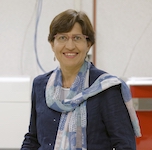
A reality check on climate change
Q. In August, the IPCC released its latest report. Climate Change 2021: The Physical Science Basis. What does this report tell us?
This report provides a very clear picture of how human influence drives climate change.
The world is now 1.1 degrees Celsius warmer than in the late 1800’s.The report shows that we are now living with widespread, rapid, and intensifying changes in every region in the world—and that the changes that we experience in every region take different forms, and they intensify with any additional fraction of warming.
With each fraction of a degree of warming, we will see more loss of Arctic sea ice, more permafrost thaw, faster sea level rise, and more frequent and severe extremes over land.
However, we also show that it’s possible to limit global warming. From a geophysical perspective, what this means is that we need to strongly reduce emissions of carbon dioxide (CO2). And if we want to maximize the benefits of action for climate and air quality, it’s also really important to reduce emissions of methane.
Q. Didn’t we already know much of this? What’s new in this report compared to previous reports by the IPCC?
The new report reflects many advances in climate science. We have a much better understanding of how the climate reacts to emissions of greenhouse gases, and every feedback loop in the climate system. We use this improved understanding of the climate response to provide more accurate estimates of future warming and the associated implications for changes such as sea level rise.
Another new aspect in this report is the link between a changing climate and the water cycle. Warming leads to an intensification of the water cycle. That means changing precipitation patterns—for instance, a decrease in average precipitation in Mediterranean type climates, and an increase in other places.
Precipitation will be increasingly variable, with intensified very wet and very dry events, and very wet and dry seasons. That’s extremely important due to the critical role of water for agriculture, cities, ecosystems and industrial activity.
Around a third of the report reflects progress in linking regional climate and global climate change, to better understand how extremes are changing in a warming climate, over both land and the ocean. This regional information is really important for society to look at what is expected in coming decades and to inform decision making.
Q. Regarding decision making, this report touches on some frightening but very uncertain risks of climate change, including potentially catastrophic sea level rise, or abrupt circulation changes. What does the report say about these types of events?
We know from the past climate that abrupt events can happen. Examples include a collapse of some sectors of the Antarctic ice sheet, or a collapse of the deeper Atlantic Ocean circulation, or a dieback of specific tropical forests.
We cannot today exclude that these abrupt changes can physically occur, however, we don’t know for which level of warming or for which time horizon they will occur. But if they occur, then we know what is physically plausible, for instance, we provide an estimate of the additional sea level rise over this century if a collapse of some sectors on the Antarctic ice sheet is triggered. This is new, and it’s reflected in the report.
Q. The Secretary General of the UN called this report a “code red for humanity.” Is it too late? What can be done to limit future climate change?
In this report we show we expect to reach a level of warming (averaged over 20 years) of around 1.5 degrees in the next 20 years, and it means that, by 2030, every second year would reach a level of global annual temperature above 1.5 degrees Celsius. And we need to be prepared for that. We also show that in every region, every additional fraction of warming matters.
However, if greenhouse gas emissions decline rapidly, starting now, by several percent per year, then we can still limit the level of warming well below 2°C and even close to 1.5°C during this century. In this case, we would see quickly benefits for air quality and atmospheric composition and, within about 20 years, the effects for global temperature trends.
By limiting warming, we can really stop many of the changes in extremes and other aspects directly linked to global warming levels, and we can slow down the unavoidable changes like sea level rise.
Q. How can decision makers use this report?
Many decisions made today are still informed by our knowledge about past changes and extremes—what was the record heat, the record amount of rainfall in the past 30 years or the past century. But looking backwards is not relevant anymore, because we expect warming to continue in the next decades, even if emissions decline, due to the cumulative effect of CO2. It’s really important for society to use that scientific knowledge to look ahead into the coming decades. This report helps us do that.




